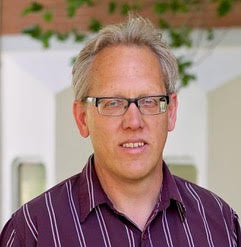A Pilot Survey of Perceived Competence of Pre-Service School Practitioners in Inclusive Education for Students with Special Needs
Article ID: 5570
DOI: https://doi.org/10.30564/jiep.v8i1.5570
Abstract
Inclusive education provides a learning environment that enriches learning of all students. Attitudes about inclusive education are essential to its implementation (Sharma et al., 2021;[18] Wray et al., 2022).[21] Therefore, school practitioners need training to advance their attitudes, knowledge, skills, and actions (Sharma et al., 2021;[18] Wray et al., 2022).[21] This study examines the pre-service school practitioners' training and perceived competence in inclusive education for students with special needs. We developed a survey aimed to gain insight into training and perceived competence. Survey results related to training suggest that teacher education and special education majors might benefit from additional training in universal design for learning, co-teaching, and flexible grouping, where school counselor majors might need more training in all categories of inclusive education. Survey results related to perceived competence results suggest that most pre-service school practitioners perceived themselves to be very capable of implementing inclusive educational practices.
Keywords
Full Text:
 PDF
PDF
References
[1] Allen, J. K. (2017). Exploring the role teacher perceptions play in the underrepresentation of culturally and linguistically diverse students in gifted programming. Gifted Child Today, 40(2), 77-86. https://doi.org/10.1177/1076217517690188
[2] American School Counselor Association. (2022). The school counselor and students with disabilities. https://www.schoolcounselor.org/Standards-Positions/Position-Statements/ASCA-Position-Statements/The-School-Counselor-and-Students-with-Disabilitie
[3] Bureau of Exceptional Education and Student Services, What is exceptional student education for children who are gifted? (2002). Tallahassee, FL; Florida Department of Education. https://www.fldoe.org/core/fileparse.php/7690/urlt/0070092-whatgift.pdf
[4] Chitiyo, J., & Brinda, W. (2018). Teacher preparedness in the use of co-teaching in inclusive classrooms. Support for Learning, 33(1), 38-51. https://doi.org/10.1111/1467-9604.12190
[5] Chitiyo, J., Simone, K., Muresherwa, E., Chitiyo, G. & Chitiyo, M. (2024) Inclusive education in Zimbabwe: An assessment of teachers' self-efficacy and attitudes in Masvingo. Journal of Research in Special Educational Needs, 00, 1–13. https://doi.org/10.1111/1471-3802.12716
[6] Convention on the Rights of Persons with Disabilities (CRPD), 2006. United Nations. Retrieved from: https://social.desa.un.org/issues/disability/crpd/convention-on-the-rights-of-persons-with-disabilities-crpd
[7] de Barona, M. S., & Barona, A. (2006). School counselors and school psychologists: Collaborating to ensure minority students receive appropriate consideration for special educational programs. Professional School Counseling, 10(1), 3–13. https://doi.org/10.1177/2156759X0601001S02.
[8] Ford, B. A., Stuart, D. H., & Vakil, S. (2014). Culturally responsive teaching in the 21st century inclusive classroom. Journal of the International Association of Special Education, 15(2), 56–62. https://uploads.documents.cimpress.io/v1/uploads/22e3c052-5102-4cef-a4c0-aab45bde7ce6~110/original?tenant=vbu-digital
[9] Fowler, S. A., Coleman, M. R. B., & Bogdan, W. K. (2019). The state of special education profession survey report.TEACHING Exceptional Children, 52(1), 8-29. https://exceptionalchildren.org/sites/default/files/2021-06/0040059919875703.pdf
[10] Goodman-Scott, E., Bobzien, J., & Milsom, A. (2019). Preparing preservice school counselors to serve students with disabilities: A case study. Professional School Counseling, 22(1), 1-11. https://journals.sagepub.com/doi/abs/10.1177/2156759X19867338
[11] Heward, W. L. (2022). Exceptional children: An introduction to special education (12th ed.). Pearson.
[12] Hicks-Monroe, S. L. (2011). A review of research on the educational benefits of the inclusive model of education for special education students. Journal of the American Academy of Special Education Professionals, 61–69. https://files.eric.ed.gov/fulltext/EJ1136899.pdf
[13] National Center for Education Statistics (2024). Students with disabilities. https://nces.ed.gov/fastfacts/display.asp?id=59#:~:text=SOURCE:%20U.S.%20Department%20of%20Education,visual%20impairments%20(69%20percent).
[14] Parikh Foxx, S., Saunders, R., Test, D. W., & Flowers, C. (2022). School counselors’ perceptions regarding importance of and ability to implement transition services for students with disabilities. Professional School Counseling, 26(1), 1 – 9. https://doi.org/10.1177/2156759X221090524
[15] Pinkelman, S. E., McIntosh, K., Rasplica, C. K., Berg, T. & Strickland-Cohen, M. K. (2015) Perceived enablers and barriers related to sustainability of school-wide positive behavioral interventions and supports. Behavioral Disorders, 40(3), pp. 171–83.
[16] Reis, S. M., Baum, S. M., & Burke, E. (2014). An Operational Definition of Twice-Exceptional Learners: Implications and Applications. Gifted Child Quarterly, 58(3), 217- 230. https://doi.org/10.1177/0016986214534976
[17] Rosado-Castellano, F., Sánchez-Herrera, S., Pérez-Vera, L., & María Jesús Fernández-Sánchez. (2022). Inclusive education as a tool of promoting quality in education: Teachers’ perception of the educational inclusion of students with disabilities. Education Sciences, 12(7), 471. https://doi.org/10.3390/educsci12070471
[18] Sharma, M., Sumaiya, B., Devi, M., Raj, T., & Saini, R. (2021). Good pedagogical practices for inclusive education. Psychology and Education, 58(5), 4576-4580.http://psychologyandeducation.net/pae/index.php/pae/article/view/6685/5563
[19] Sirem, Ö., & Çatal, T. (2023). An analysis of classroom teachers’ awareness of inclusive education. European Journal of Special Needs Education, 38(2), 203-217. https://doi.org/10.1080/08856257.2022.2050971
[20] Triviño-Amigo, N., Polo-Campos, I., Gomez-Paniagua, S., Barrios-Fernandez, S., Mendoza-Muñoz, M., Rojo-Ramos, Jorge. (2023). Differences in the perception regarding inclusion preparation among teachers at different educational stages. International Journal of Environmental Research and Public Health, 20(4), 1-12. https://doi.org/10.3390/ijerph20043420
[21] Wray, E., Sharma, U., & Subban, P. (2022). Factors influencing teacher self-efficacy for inclusive education: A systematic literature review. Teaching and Teacher Education, 117, 1-19. https://doi.org/10.1016/j.tate.2022.103800
[22] Yada, A., Leskinen, M., Savolainen, H., & Schwab, S. (2022). Meta-analysis of the relationship between teachers’ self-efficacy and attitudes toward inclusive education. Teaching and Teacher Education, 109, 103521. https://doi.org/10.1016/j.tate.2021.103521
[23] United Nations Educational, Scientific and Cultural Organization. (1994). The Salamanca statement and framework for action on special needs education. https://unesdoc.unesco.org/ark:/48223/pf0000098427
Refbacks
- There are currently no refbacks.
 +65 65881289
+65 65881289 contact@bilpublishing.com
contact@bilpublishing.com






